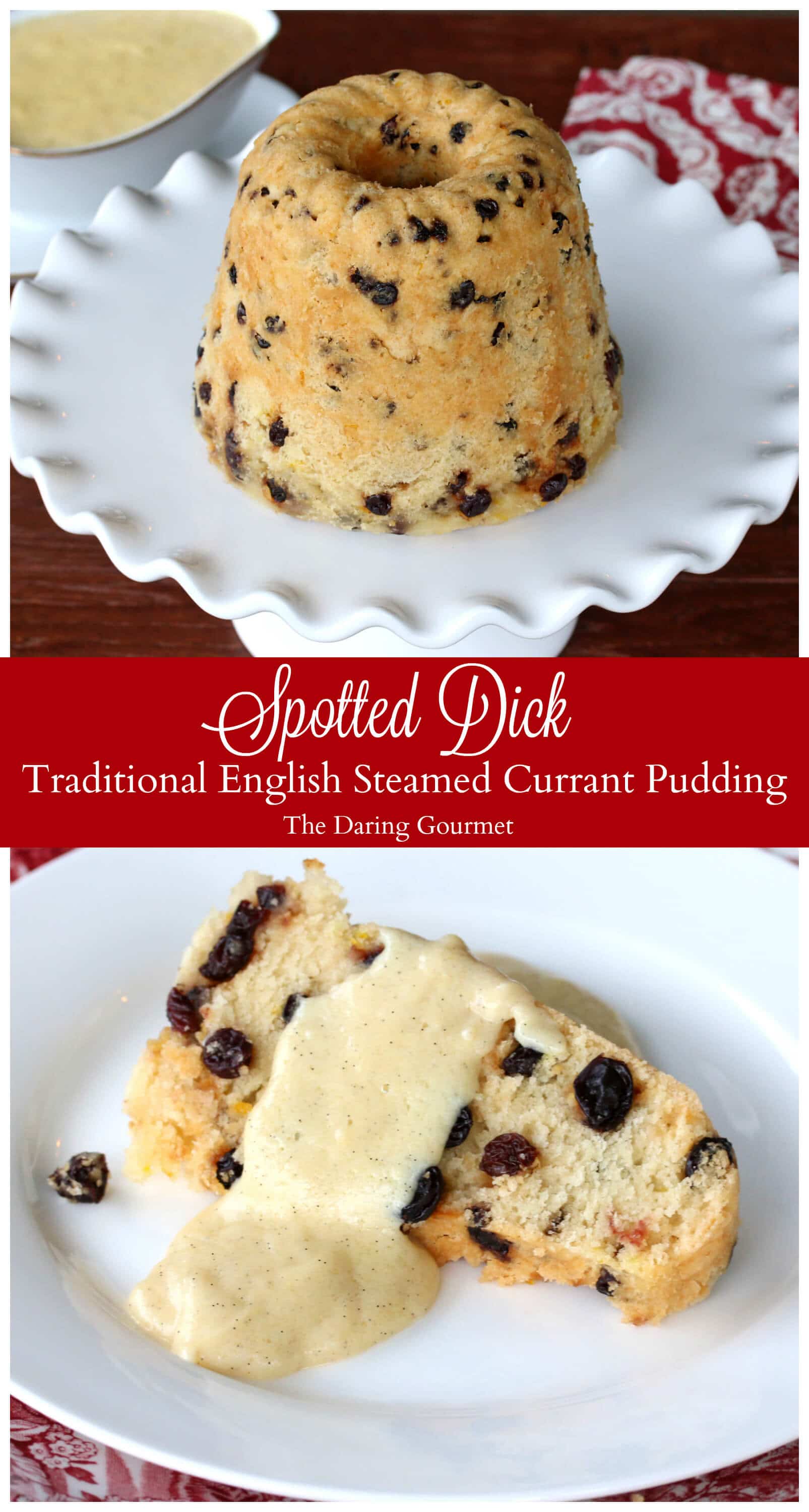All about Spotted Dick
Spotted Dick is a classic British dessert that has delighted taste buds for generations. This traditional pudding is an essential part of British culinary heritage, offering a unique blend of flavors and textures that truly set it apart. So, what exactly is Spotted Dick, and why is it such a beloved treat in the United Kingdom?

The Origin of the Name
The peculiar name, "Spotted Dick," can raise a few eyebrows and spark curiosity. However, fear not – it has absolutely nothing to do with a medical condition! The name actually comes from the appearance of the dish itself. Spotted Dick consists of suet pastry, studded with currants or raisins that create the characteristic "spots" in the pudding. While its name may prompt a few giggles, the taste and tradition associated with Spotted Dick are no laughing matter!
A Creamy and Fruity Delicacy
Spotted Dick is made by steaming or boiling a moist suet pastry studded with dried fruits. The suet pastry gives the dessert a rich, buttery flavor that complements the sweetness of the currants or raisins. This combination creates a symphony of tastes that are brought to life when served with a generous drizzle of custard.
Historical Roots
Spotted Dick dates back to the 19th century, where it made its debut in England's kitchens. Its simplicity, affordability, and delicious taste made it popular among individuals from all walks of life. With the introduction of currants and raisins to the recipe, the dish took on its distinctive appearance, captivating the hearts and palates of the British people. The dessert quickly found its place on countless dinner tables across the nation and remained a firm favorite ever since.
The Beloved British Treat
Spotted Dick has withstood the test of time, continuing to be a cherished part of British culture. Whether enjoyed during special occasions or as a comforting dessert after a long day, this pudding has remained a constant source of culinary joy. Restaurants and home cooks alike continue to feature Spotted Dick on their menus, ensuring that this iconic treat is passed down to future generations.
So, the next time you come across the quirky name of "Spotted Dick," remember that it refers to a delightful British dessert. This classic pudding, with its mouthwatering combination of flavors, remains a testament to the rich heritage of British cuisine. Treat yourself to a taste of tradition and experience the charm of Spotted Dick firsthand!
In conclusion, Spotted Dick is a unique and beloved British dessert that has stood the test of time. Its unusual name, delicious fruity flavors, and rich history make it a delightful treat worth exploring. Whether you're in the United Kingdom or discovering it from afar, be sure to indulge in the magic of Spotted Dick at least once!
Related FAQs about what is spotted dick
What are the main ingredients of Spotted Dick?
Spotted Dick is made with suet pastry, currants or raisins, and sometimes other dried fruits.
Why is it called Spotted Dick?
Spotted Dick is named after the spots created by the currants or raisins dotted throughout the suet pastry.
How is Spotted Dick traditionally served?
Spotted Dick is typically served with a generous drizzle of custard, which adds a creamy and indulgent touch to the dessert.
Is Spotted Dick a popular dessert in the UK?
Yes, Spotted Dick is a cherished and traditional British dessert that has remained popular over the years.
Can I find Spotted Dick outside of the United Kingdom?
While Spotted Dick is primarily associated with British cuisine, it might be available in specialty British stores or restaurants in other countries.
Glossary about what is spotted dick
1. Spotted Dick: Spotted Dick is a traditional British dessert made with suet pastry and studded with currants or raisins. It is often served with custard and has been popular in the United Kingdom for many years due to its unique flavor and historical significance.
2. Suet pastry: Suet pastry is a type of pastry made with flour and suet, a solid white fat found around the kidneys and loins of animals. It is known for its rich, buttery flavor and is commonly used in traditional British dishes, such as Spotted Dick.
3. Currants: Currants are small, dried, seedless grapes that can range in color from dark red to black. They are often used in baking and cooking to add sweetness and texture to dishes like Spotted Dick.
4. Raisins: Raisins are dried grapes that come in different varieties and sizes. They are a common ingredient in many desserts, including Spotted Dick, and provide a natural sweetness and chewy texture.
5. Custard: Custard is a sweet sauce or dessert made from a combination of milk or cream, eggs, sugar, and flavorings. It is often served with desserts like Spotted Dick to add a creamy and luxurious element.
6. 19th century: The 19th century refers to the period from 1800 to 1899. This century saw significant advancements in technology, industry, and society, including the popularization of traditional British dishes like Spotted Dick.
7. British culture: British culture refers to the customs, traditions, and way of life of the people living in the United Kingdom. Spotted Dick is considered a cherished part of British culture and is enjoyed by people of all ages.
8. British cuisine: British cuisine encompasses the cooking techniques, ingredients, and dishes native to the United Kingdom. Spotted Dick is a classic example of British cuisine and has become a symbol of the country's culinary heritage.
9. Restaurants: Restaurants are establishments where people go to eat meals prepared and served by professionals. Many restaurants, both in the United Kingdom and around the world, include Spotted Dick on their menus as a traditional British dessert.
10. Home cooks: Home cooks refer to individuals who prepare meals and desserts in their own homes. Many home cooks enjoy making Spotted Dick as a homemade treat, following traditional recipes that have been passed down through generations.
